Art
What Art Does for Your Brain | Greater Good – Greater Good Science Center at UC Berkeley
|
|
One of my favorite sayings comes from David Thoreau: “My life has been the poem I would have writ / But I could not both live and utter it.” It speaks to the way that life and art are intertwined, and how we gain so much from living life with a sense of beauty and aesthetics in mind.


There are many ways art infuses my own life—from singing and playing guitar to reading novels and attending plays, which all help to improve my mood and enhance my sense of wonder with the world. Probably, many of you feel the same way. Some of you may have felt you’ve even been saved by art.
Now, a new book, Your Brain on Art, by Susan Magsamen and Ivy Ross, helps explain why that might be the case. By focusing in on the science of “neuroaesthetics”—how our brains respond to aesthetic and artistic experiences—the authors make the case that art is good for our physical and mental health, and that we should all incorporate more of it into our lives.
What art does for our brains and bodies
X

It may seem a mystery that we make or enjoy art at all. But art has been part of every culture on the planet, for tens of thousands of years. This means art is central to our survival somehow, perhaps helping us to make new intuitive leaps and innovate and to help bind us to one another.
As the authors explain, appreciating or making art involves using many parts of our brain—from those that process our senses to those involved in emotion, memory, and cognition. We are drawn to experiencing art, because doing so lights up the pleasure centers of our brains, creating a warm feeling that encourages us to want more of the same—much the way our brains respond to fulfilling basic needs, like food and sex.
“When you experience virtual reality, read poetry or fiction, see a film or listen to a piece of music, or move your body to dance, to name a few of the many arts, you are biologically changed,” write Magsamen and Ross. “There is a neurochemical exchange that can lead to what Aristotle called catharsis, or a release of emotion that leaves you feeling more connected to yourself and others.”
There is ample evidence that engaging in the arts improves well-being. For example, one study involving more than 23,000 British participants found that those who either made art at least once a week or attended cultural events at least once or twice a year were happier and had better mental health than those who didn’t. This was independent of their age, marital status, income, health behaviors, social support, and more.
Though it’s hard to know in large survey studies whether art makes people happier or happier people are more likely to make art (or respond to it), at least one study points toward the former. A longitudinal study in Japan also showed that people who engaged in artistic activities, like crafts or painting, at one point in time had less cognitive impairment later than those who didn’t, which again supports a direct effect of art on well-being.
These kinds of studies make a case for making art a regular part of our lives, say the authors.
“Like exercise and good nutrition, the arts on a routine basis will support your health,” they write.
How art can heal us
Not only can art improve general well-being, it can also be used to prevent or heal us from physical and mental illness. Art therapy is a growing field, useful for many ailments and situations, including when therapists work with people who may have difficulties communicating directly about their inner experience, like children suffering from trauma or people with autism.
<img alt=”Your Brain on Art: How the Arts Transform Us (Random House, 2023, 304 pages)” src=”https://ggsc.s3.amazonaws.com/images/made/images/uploads/Your_Brain_on_Art_200_303_int_c1-1x.jpg” srcset=”https://ggsc.s3.amazonaws.com/images/made/images/uploads/Your_Brain_on_Art_200_303_int_c1-1x.jpg 1x, https://ggsc.s3.amazonaws.com/images/made/images/uploads/Your_Brain_on_Art_329_499_int_c1-2x.jpg 2x” sizes=”(min-width: 1041px) 1170px, 100vw”>
Your Brain on Art: How the Arts Transform Us (Random House, 2023, 304 pages)
“The arts are being used in at least six distinct ways to heal the body: as preventative medicine; as symptom relief for everyday health issues; as treatment or intervention for illness, developmental issues, and accidents; as psychological support; as a tool for successfully living with chronic issues; and at the end of life to provide solace and meaning,” the authors write.
Probably, the most robust research on art and healing has been done with music. Listening to music or playing or singing music has been tied to things like reduced stress and pain and a better immune function. Singing has also been shown to help women overcome postpartum depression more quickly, while listening to music can reduce symptoms in people suffering from migraines. A 2020 National Endowment for the Arts report that reviewed 116 studies on music therapy for opioid users found that listening to music helped soothe their pain, reduce their need for medication, and encourage them to seek treatment for addiction.
Music is not the only art that heals. One study found that coloring and drawing reduced people’s heart rate and increased their respiratory sinus arrhythmia (a marker of good cardiovascular health) while making them feel less anxious. Sculpting with clay has been found to change wave patterns in our brains in ways that reflect a relaxed, meditative state. There is evidence that listening to poetry can have similar effects on the brain as listening to music can, giving us peak emotional experiences.
The authors go through many examples of how people turn to art when they need to heal from acute or chronic trauma—for example, first responders, war veterans suffering post-traumatic stress disorder, or people of color facing ongoing discrimination. They also highlight programs using art therapy to help folks in their recovery and research labs studying healing through art, such as the National Endowment for the Arts Creative Forces program for vets and the Drama Therapy Theater and Health Lab at New York University.
Some of the connections between art and healing offered in the book seem a bit wild, though. For example, the authors point to the work of John Beaulieu, who has used various sound patterns to aid people suffering from trauma or other mental health disorders. Though evidence for the effectiveness of this treatment may be thin, it’s intriguing to consider the possibilities for sound healing, given that some experiments have found sound waves can cause heart cells to move and form new tissue and protect us from the harmful effects of Alzheimer’s disease.
Art in everyday life
What does all of this point to? Though the research may be relatively young, there’s enough to say that we should all consider making time for art and aesthetic experiences in our everyday life. Enjoying art seems to contribute to our flourishing, say Magsamen and Ross, helping us to stay healthier and happier.
To that end, they argue that the arts belong in schools, where they help augment both learning and well-being in children. And they encourage adults to engage in art, whether that means painting, composing, cooking, or dancing, or it means listening to music, walking in nature, watching a play, or sitting inside a cathedral. That’s because art does so much good for our minds and bodies, helping us to cultivate our curiosity, stay open to our emotions, experience surprise or novelty, think differently about life, embrace ambiguity, engage the senses, feel awe, and more. It may even help heal your soul.
“The arts can transform you like nothing else. They can help move you from sickness to health, stress to calm, or sadness to joy, and they enable you to flourish and thrive,” write the authors. “Are you ready? The world, and its beauty, are there waiting for you.”





Art
Turner Prize shortlist includes art showcasing Scottish Sikh community
|
|
A Scottish artist who uses cars, worship bells and Irn-Bru in her work is among the nominees for this year’s Turner Prize.
Glasgow-born Jasleen Kaur’s work reflects her life growing up in the city’s Sikh community.
She is up for the prestigious art award, now in its 40th year, alongside Pio Abad, Claudette Johnson and Delaine Le Bas.
Turner Prize jury chairman Alex Farquharson described it as a “fantastic shortlist of artists”
Works by the nominated artists will go on show at London’s Tate Britain gallery from 25 September.
They will receive £10,000 each, while the winner, to be announced on 3 December, will get £25,000.
In a statement, Farquharson said: “All four make work that is full of life.
“They show how contemporary art can fascinate, surprise and move us, and how it can speak powerfully of complex identities and memories, often through the subtlest of details.
“In the Turner Prize’s 40th year, this shortlist proves that British artistic talent is as rich and vibrant as ever.”
The shortlisted artists are:
Pio Abad
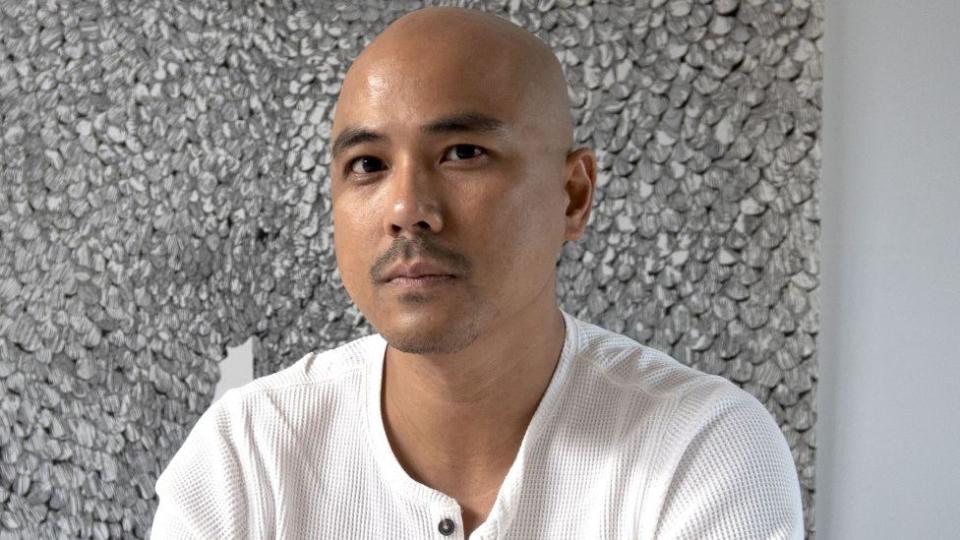

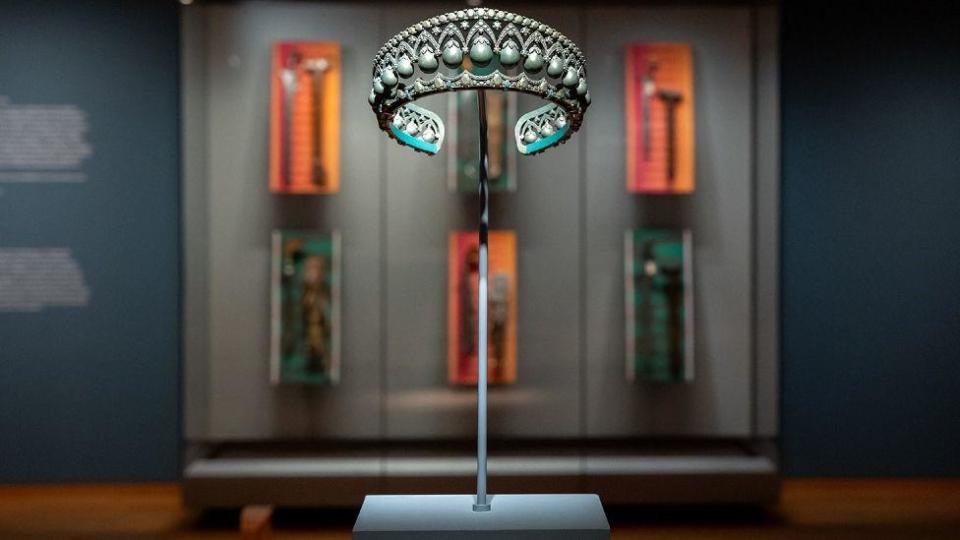

Manila-born Abad’s solo exhibition To Those Sitting in Darkness at the Ashmolean Museum in Oxford included drawings, etchings and sculptures that combined to “ask questions of museums”, according to the jury.
The 40-year-old, who works in London, reflects on colonial history and growing up in the Philippines, where his parents struggled against authoritarianism.
The title of his exhibit is a nod to Mark Twain’s 1901 essay To the Person Sitting In Darkness, which hit out at imperialism.
Jasleen Kaur
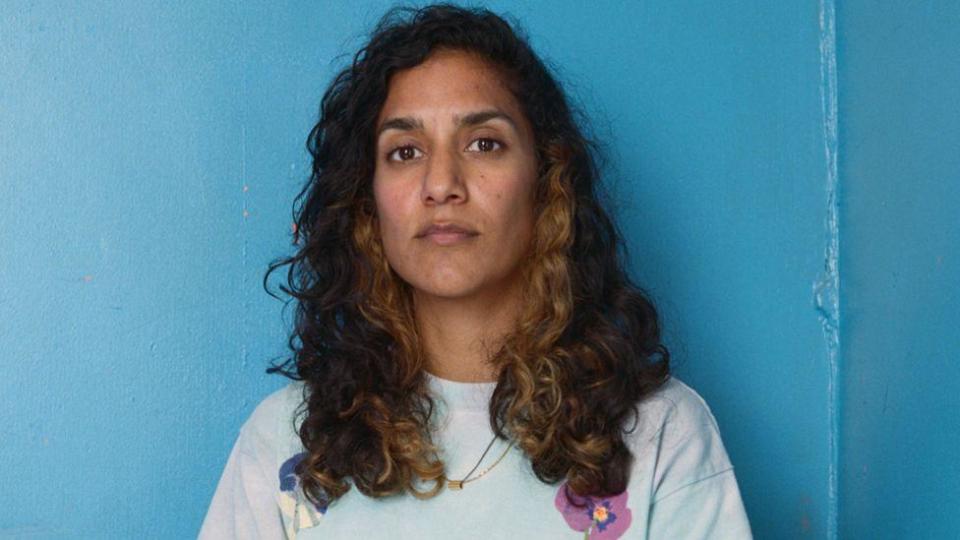



Kaur is on the list for Alter Altar at Tramway, Glasgow, which included family photos, an Axminster carpet, a classic Ford Escort covered in a giant doily, Irn-Bru and kinetic handbells.
The 37-year-old, who lives in London, had previously showcased her work at the Victoria and Albert Museum by looking at popular Indian cinema.
Delaine Le Bas


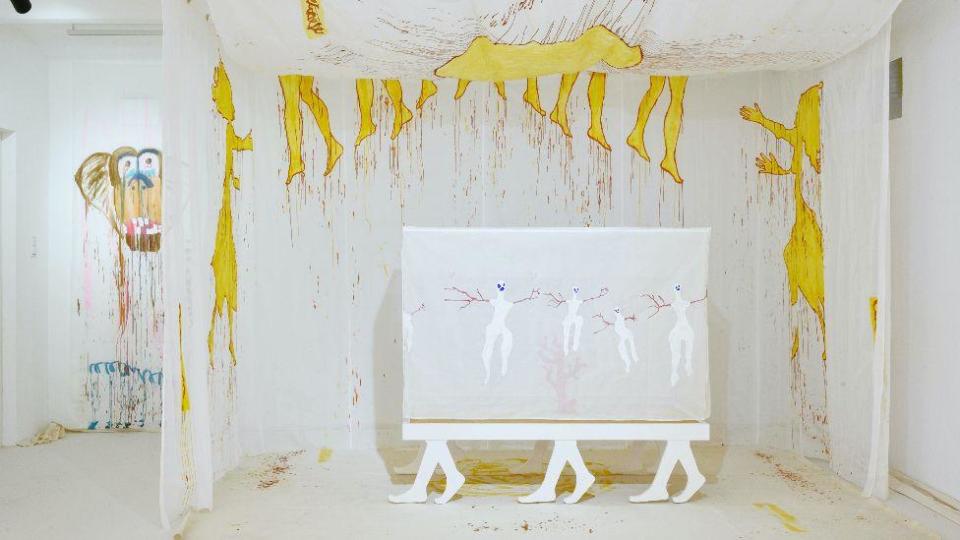

Worthing-born Le Bas is nominated for an exhibition titled Incipit Vita Nova. Here Begins The New Life/A New Life Is Beginning. Staged at the Secession art institute in Vienna, Austria, it saw painted fabrics hung, with theatrical costumes and sculptures also part of the exhibit.
The 58-year-old artist was inspired by the death of her grandmother and the history of the Roma people.
The jury said they “were impressed by the energy and immediacy present in this exhibition, and its powerful expression of making art in a time of chaos”.
Claudette Johnson


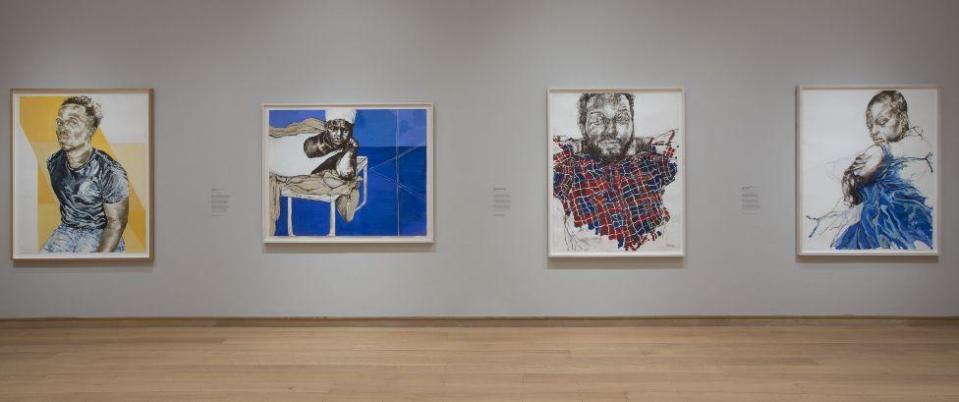

Manchester-born Johnson has been given the nod for her solo exhibition Presence at the Courtauld Gallery in London, and Drawn Out at Ortuzar Projects, New York.
She uses portraits of black women and men in a combination of pastels, gouache and watercolour, and was praised by the judges for her “sensitive and dramatic use of line, colour, space and scale to express empathy and intimacy with her subjects”.
Johnson, 65, was appointed an MBE in 2022 after being named on the New Year Honours list for her services to the arts.





Art
Turner Prize: Shortlisted artist showcases Scottish Sikh community
|
|
Turner Prize shortlist includes art showcasing Scottish Sikh community


A Scottish artist who uses cars, worship bells and Irn-Bru in her work is among the nominees for this year’s Turner Prize.
Glasgow-born Jasleen Kaur’s work reflects her life growing up in the city’s Sikh community.
She is up for the prestigious art award, now in its 40th year, alongside Pio Abad, Claudette Johnson and Delaine Le Bas.
Turner Prize jury chairman Alex Farquharson described it as a “fantastic shortlist of artists”
Works by the nominated artists will go on show at London’s Tate Britain gallery from 25 September.
They will receive £10,000 each, while the winner, to be announced on 3 December, will get £25,000.
In a statement, Farquharson said: “All four make work that is full of life.
“They show how contemporary art can fascinate, surprise and move us, and how it can speak powerfully of complex identities and memories, often through the subtlest of details.
“In the Turner Prize’s 40th year, this shortlist proves that British artistic talent is as rich and vibrant as ever.”
The shortlisted artists are:
Pio Abad
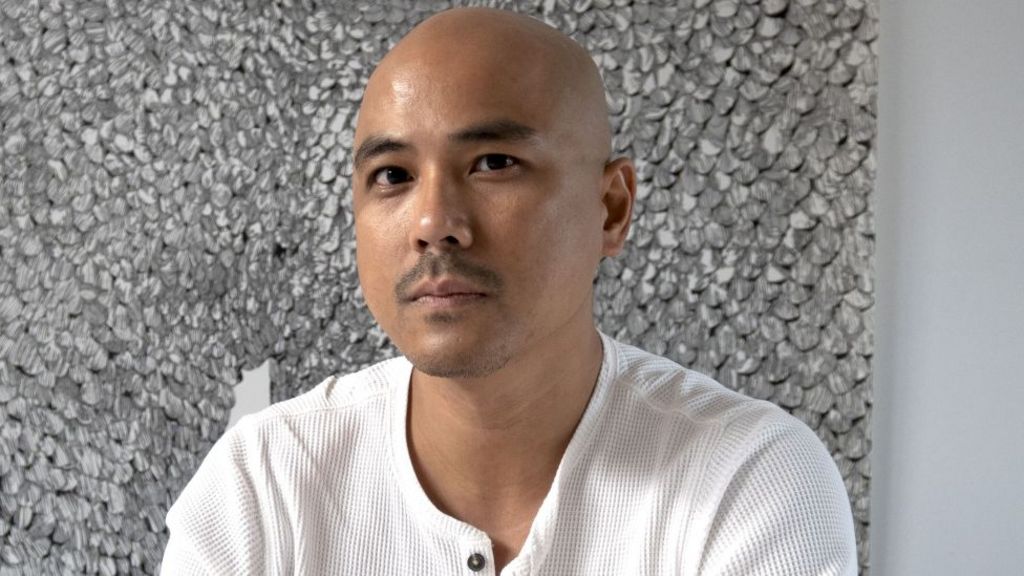

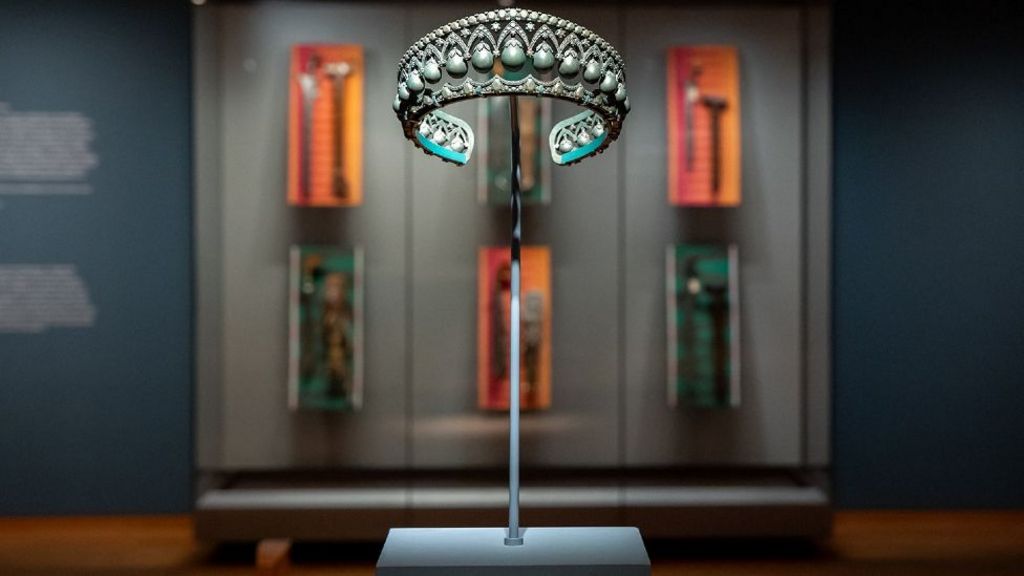

Manila-born Abad’s solo exhibition To Those Sitting in Darkness at the Ashmolean Museum in Oxford included drawings, etchings and sculptures that combined to “ask questions of museums”, according to the jury.
The 40-year-old, who works in London, reflects on colonial history and growing up in the Philippines, where his parents struggled against authoritarianism.
The title of his exhibit is a nod to Mark Twain’s 1901 essay To the Person Sitting In Darkness, which hit out at imperialism.
Jasleen Kaur
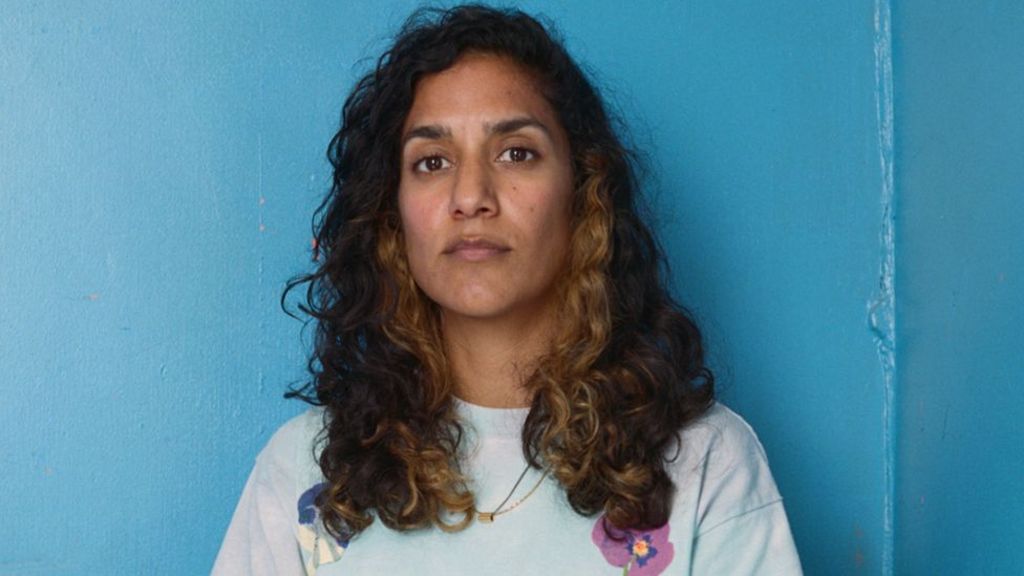



Kaur is on the list for Alter Altar at Tramway, Glasgow, which included family photos, an Axminster carpet, a classic Ford Escort covered in a giant doily, Irn-Bru and kinetic handbells.
The 37-year-old, who lives in London, had previously showcased her work at the Victoria and Albert Museum by looking at popular Indian cinema.
Delaine Le Bas
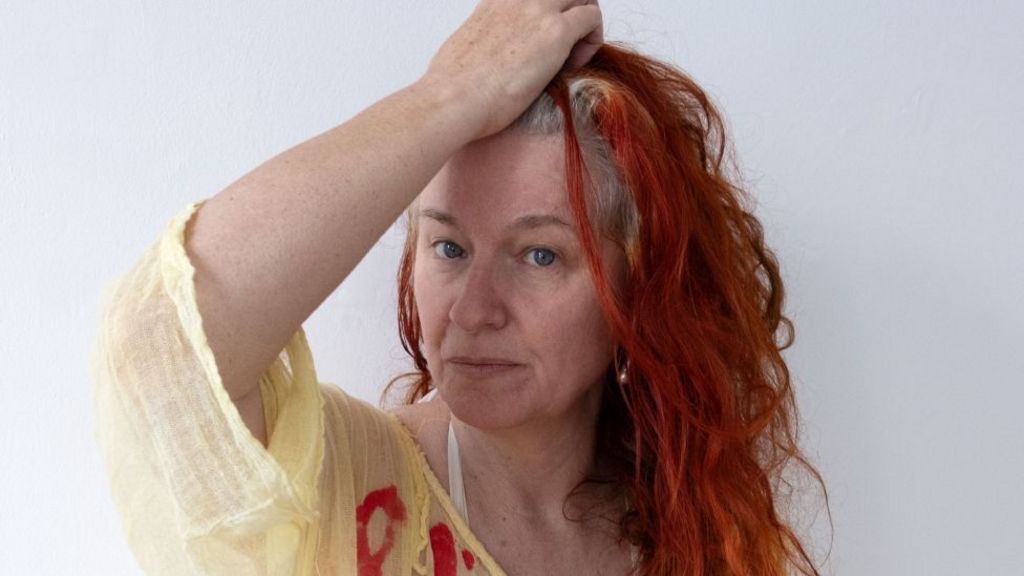



Worthing-born Le Bas is nominated for an exhibition titled Incipit Vita Nova. Here Begins The New Life/A New Life Is Beginning. Staged at the Secession art institute in Vienna, Austria, it saw painted fabrics hung, with theatrical costumes and sculptures also part of the exhibit.
The 58-year-old artist was inspired by the death of her grandmother and the history of the Roma people.
The jury said they “were impressed by the energy and immediacy present in this exhibition, and its powerful expression of making art in a time of chaos”.
Claudette Johnson
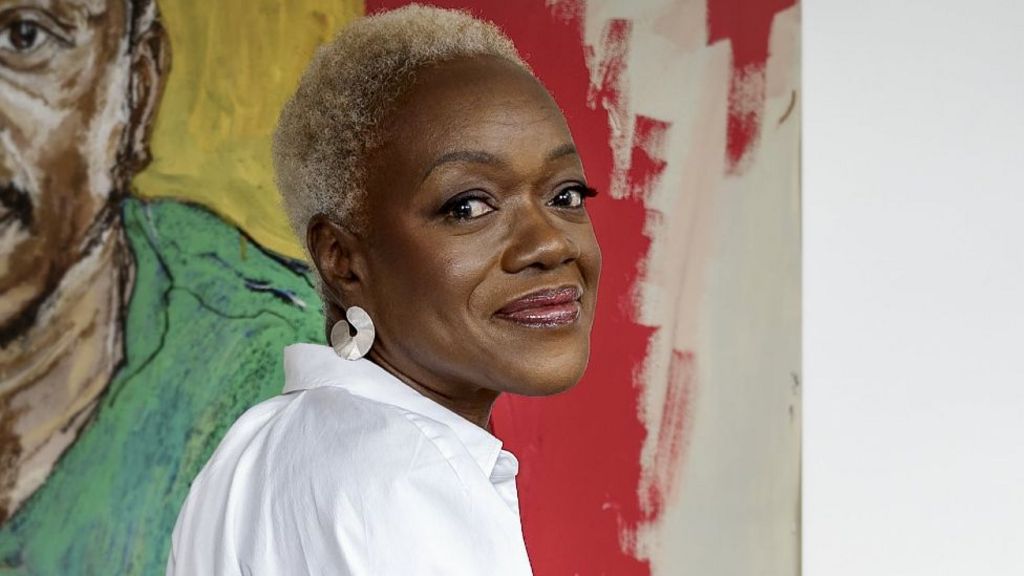

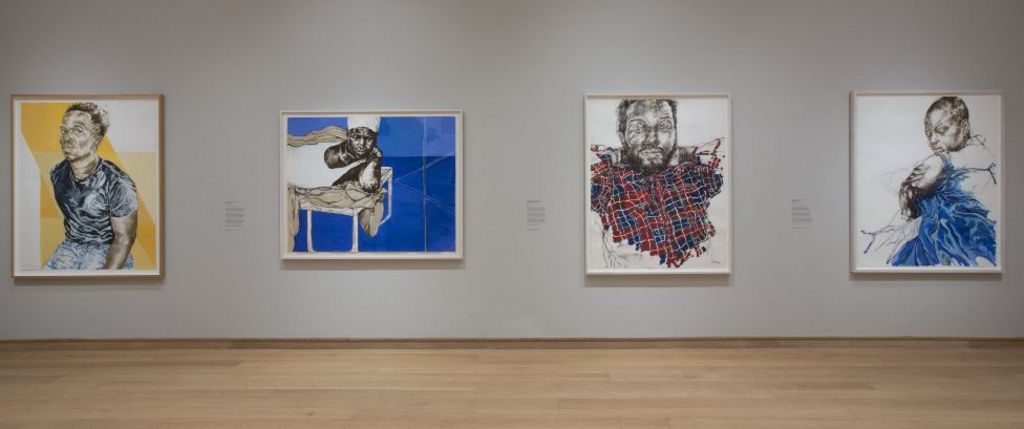

Manchester-born Johnson has been given the nod for her solo exhibition Presence at the Courtauld Gallery in London, and Drawn Out at Ortuzar Projects, New York.
She uses portraits of black women and men in a combination of pastels, gouache and watercolour, and was praised by the judges for her “sensitive and dramatic use of line, colour, space and scale to express empathy and intimacy with her subjects”.
Johnson, 65, was appointed an MBE in 2022 after being named on the New Year Honours list for her services to the arts.





Art
Claudette Johnson’s art for Cotton Capital nominated for Turner prize
|
|
Claudette Johnson has been nominated for this year’s Turner prize for her work, which includes a portrait of the African-American slavery abolitionist Sarah Parker Remond commissioned as part of the Guardian’s award-winning Cotton Capital series.
Pio Abad, Johnson, Jasleen Kaur and Delaine Le Bas will compete for the £25,000 prize, while the nominated artists will each collect £10,000 as the prize returns to Tate Britain for the first time in six years.
Colonialism, migration, nationalism and identity politics are the key themes running through the 40th edition of the Turner prize, which the jury described as showing contemporary British art “is appealing and dynamic as ever”.
Alex Farquharson, the director of Tate Britain and chair of the Turner prize jury, said this year’s nominees were exploring ideas of identity and would be exhibited from 25 September, before the jury’s final choice.
He said: “This year’s shortlisted artists can be broadly characterised as exploring questions of identity, autobiography, community and the self in relation to memory, or history or myth.”
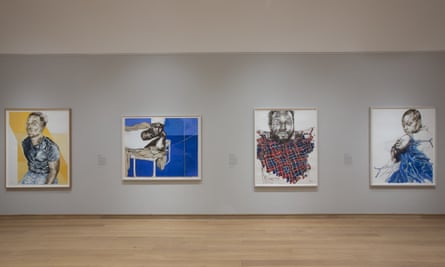

The Turner prize, regarded as one of the art world’s most prestigious awards, is presented to an artist born or working in Britain for an outstanding exhibition or presentation of their work over the previous year.
Abad was nominated for his solo exhibition To Those Sitting in Darkness at the Ashmolean Museum in Oxford, with the jury commenting on the “precision and elegance” of his work, which takes its title from a Mark Twain poem of a similar name that critiques American imperialism the Philippines, his homeland.
The show also contains references to the Benin Bronzes, after Abad discovered that the punitive expedition of 1897 – during which British troops sacked Benin City and looted thousands of objects, of which about 900 are in the British Museum’ – set off from his home, Woolwich, in south London.


Johnson was nominated for her solo Presence exhibition at the Courtauld Gallery, which the Guardian said “brilliantly questions depictions of non-white figures by such revered painters as Gauguin and Picasso”. She was also recognised for her New York show, Drawn Out, at Ortuzar Projects, which included her Redmond portrait.
She is the latest black female artist who emerged in the Black Art Movement of the 1980s to be recognised by the Turner prize, following in the footsteps of Lubaina Himid (2017 winner) and Veronica Ryan (2022), while Ingrid Pollard and Barbara Walker have both been nominated.
The jury said Johnson had been nominated because of the “renewal of her practice”, after she stopped making work in the 1990s, and the fact she was still “taking risks and trying new forms of practice”.
Kaur’s work in the exhibition Alter Altar, which was shown at Tramway in Glasgow, features sculptures and soundscapes, including a red Ford Escort covered in a huge doily, which references her father’s first car and ideas of migration and belonging in Britain.
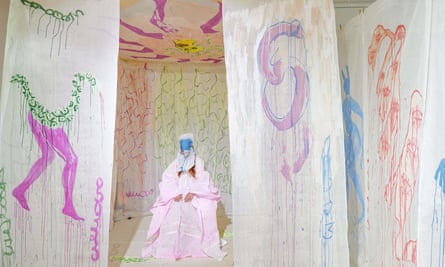

Kaur grew up in Glasgow’s Sikh community in Pollokshields, and the jury said the exhibition was a breakout show that was “generous, celebratory, moving and alive to timely issues, speaking imaginatively to how we might live together in a world increasingly marked by nationalism, division and social control”.
Le Bas’s work, shown at the Vienna Secession exhibition, was described as a “response to social and political turmoil” and includes immersive performance art with theatrical costumes and sculptures.
Farquharson said there was a chance the show may travel to Bradford during its City of Culture year, following the precedent set by Coventry, which hosted the awards in 2021, although that was still “to be confirmed”.





-



 Health21 hours ago
Health21 hours agoRemnants of bird flu virus found in pasteurized milk, FDA says
-
Art21 hours ago
Random: We’re In Awe of Metaphor: ReFantazio’s Box Art
-
News17 hours ago
Amid concerns over ‘collateral damage’ Trudeau, Freeland defend capital gains tax change
-
Art15 hours ago
The unmissable events taking place during London’s Digital Art Week
-
Tech22 hours ago
Surprise Apple Event Hints at First New iPads in Years
-
Science20 hours ago
NASA hears from Voyager 1, the most distant spacecraft from Earth, after months of quiet
-



 Politics19 hours ago
Politics19 hours agoHow Michael Cohen and Trump went from friends to foes
-
Media21 hours ago
Vaughn Palmer: B.C. premier gives social media giants another chance





